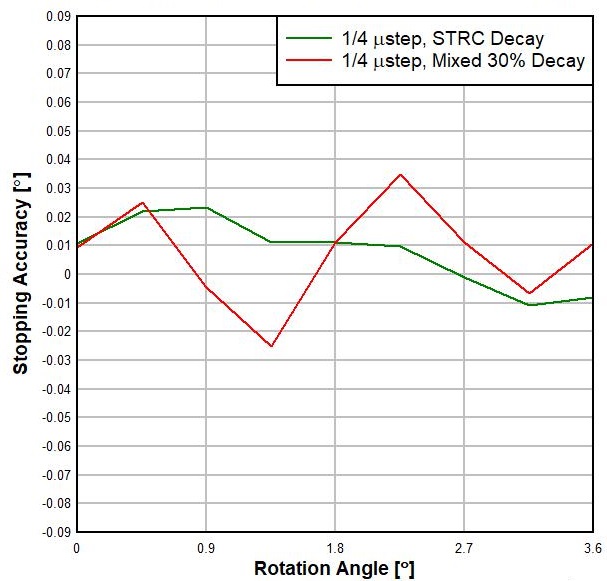SLOA293A September 2020 – October 2021 DRV8424 , DRV8426 , DRV8428 , DRV8434 , DRV8434A , DRV8434S , DRV8436 , DRV8436E , DRV8889-Q1
2.2.2 Stepper Driver Decay Mode
The smoothest operation of a stepper motor happens when perfect sinusoidal current waveforms are applied to the windings. Any ripple in the current waveform is a deviation from the desired shape and causes an uneven torque and incremental angle of the motor, which manifests as vibration and poor accuracy.
To reduce the ripple, it is recommended to operate a stepper motor on slow decay mode whenever possible, instead of fast or mixed decay. However, due to back-emf, mixed decay modes are better at following the ideal sinusoidal current waveform, especially at high speeds and on decreasing steps, compared to slow decay. Therefore, a slow decay mode which can follow the ideal waveform at all conditions is the ideal candidate for improving accuracy.
Smart tune ripple control, available in the DRV84xx and DRV88x9-Q1 family of drivers and few other stepper drivers from Texas Instruments is a special slow decay scheme that circumvents this problem by automatically switching to fast decay to reach the next decreasing step quickly - which enables it to follow the ideal sinusoidal current waveform at all speeds.
Figure 2-3 shows the stopping accuracy of DRV8424 running at 500 pps speed with 1/4 microstepping, 2-A full-scale current setting and with smart tune ripple control and mixed 30% decay modes. Clearly smart tune results in better accuracy.
 Figure 2-3 Stopping Accuracy at Different Decay Modes.
Figure 2-3 Stopping Accuracy at Different Decay Modes.